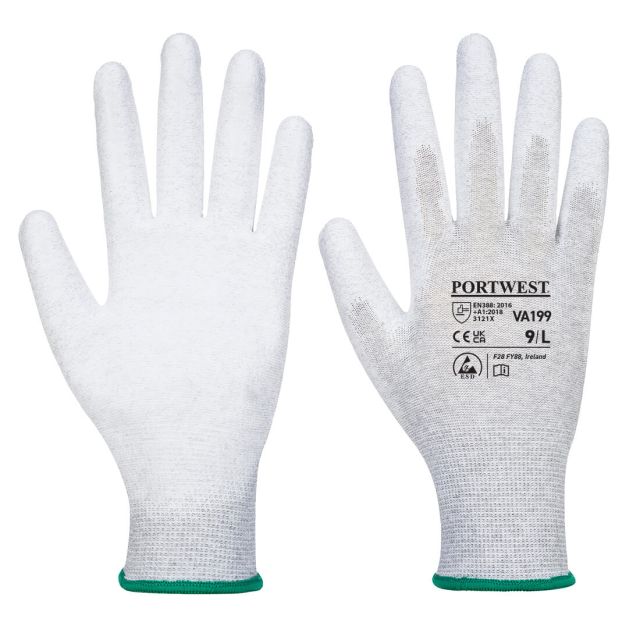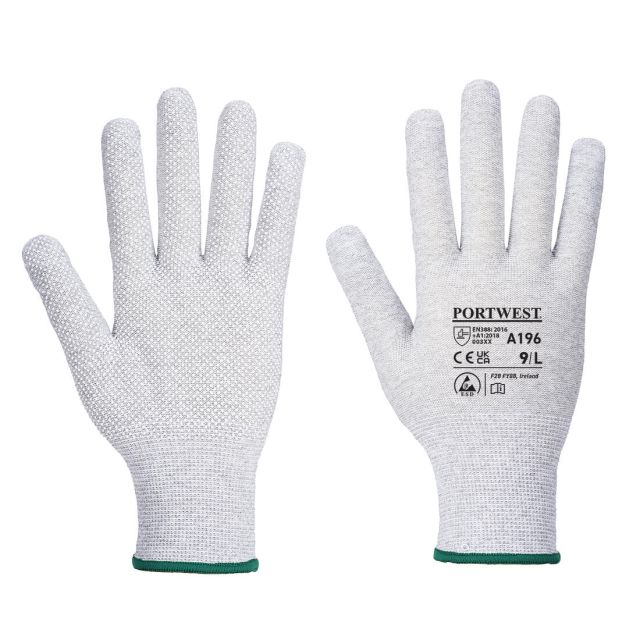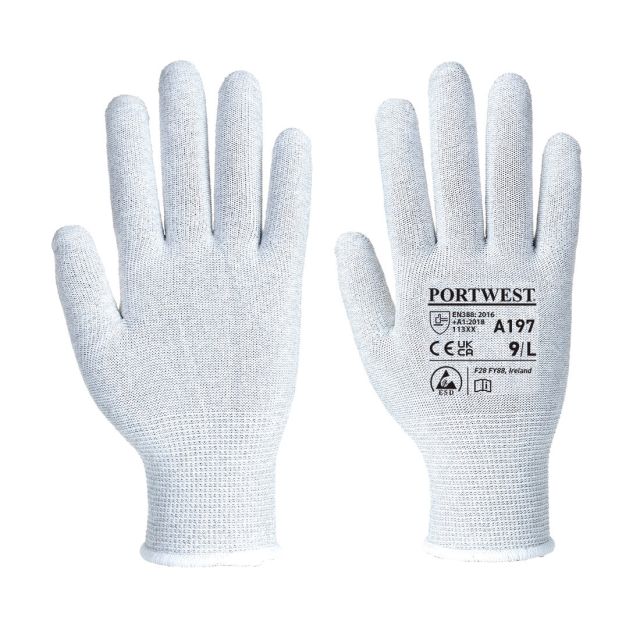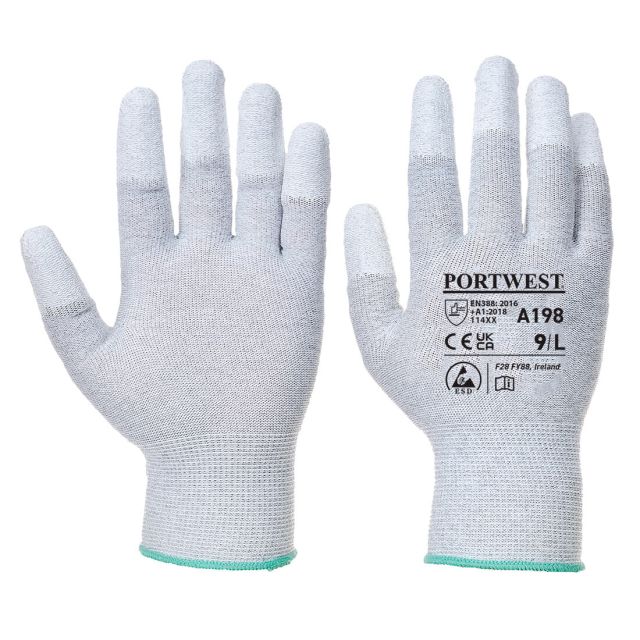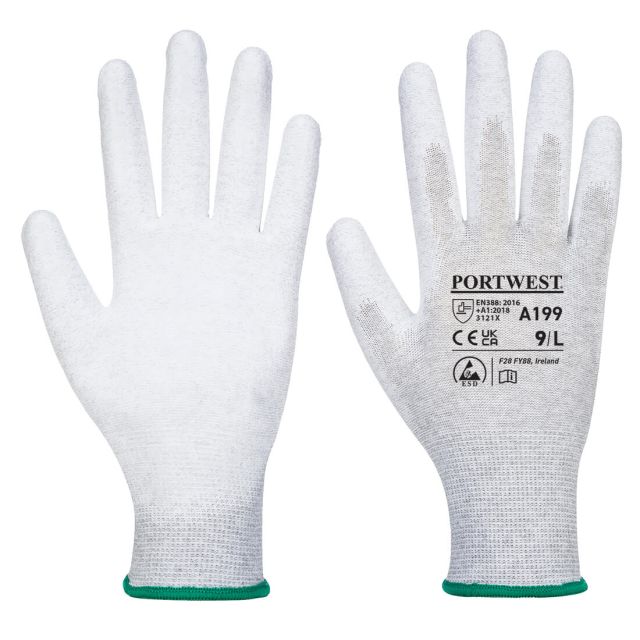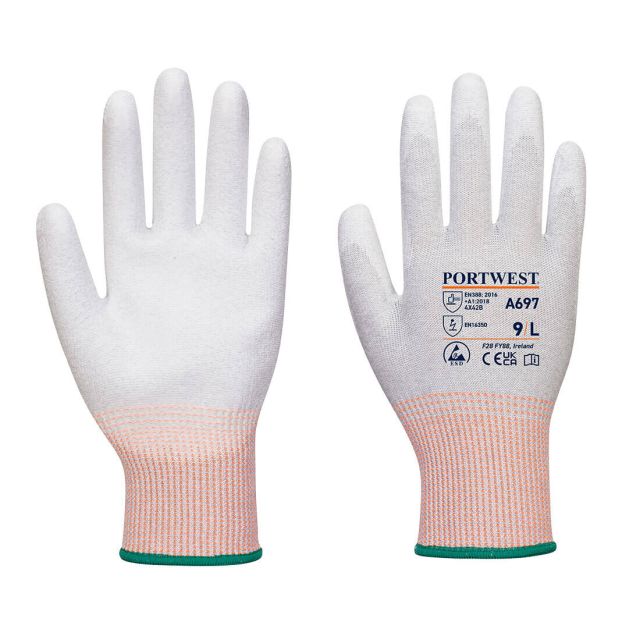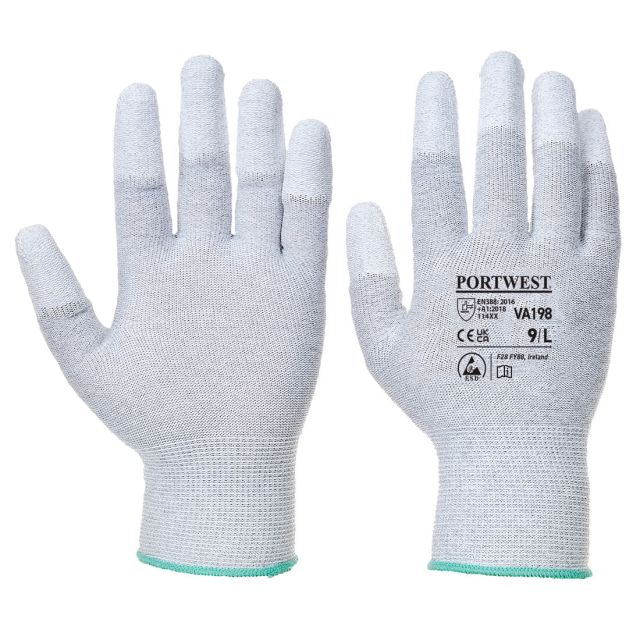Antistatic Gloves
Anti-Static Gloves reduce electrostatic discharge (ESD) risk. They’re made of materials like conductive yarn, nylon, or carbon fibre, which offer excellent static dissipative properties. These gloves are essential for industries like electronics, pharmaceuticals, and aerospace, where sensitive electronic equipment handling is required. Anti-static gloves are crucial for equipment protection, ensuring worker safety.







